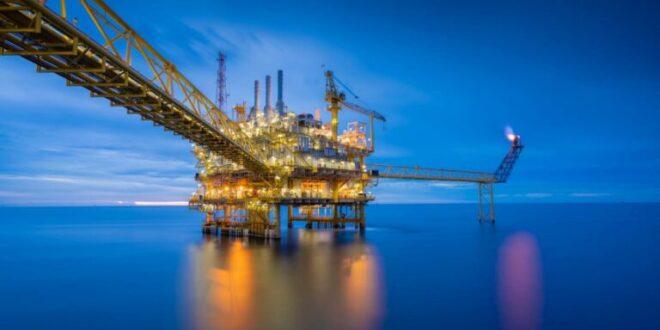The U.S. oil and gas sector has kicked off the new year on the backfoot with market sentiment as bearish as it was a year ago. Commodity analysts at Standard Chartered have reported that demand pessimism is once again dominating, with traders worried that oil demand will weaken in the U.S. and Europe. Part of Wall Street is just as bearish, with analysts warning of a challenging risk/reward scenario for the sector in the near-term with a heightened risk of a mild recession approaching.
Despite the bearishness, investors are still betting heavily on one corner of the market: offshore oil and gas.
Full year 2023 data points released by Clarksons Research paints a picture of a sector in the pink of health, with robust growth across the board. Global offshore oil and gas markets posted impressive growth in 2023, with the proprietary Clarksons Offshore Index that tracks rig count as well as offshore support vessels (OSV) and subsea day rates climbing 27% to a multi-year high of 106 points.
Even better for the bulls, the Clarksons Offshore Index is projected to reach all-time high in 2024. Rig, OSV and Subsea markets are particularly robust, with oil and gas vessel rates now higher than 2014 levels in the majority of sectors/regions. Activity remains particularly strong in the Middle East, Brazil and West Africa.
The Clarksons report has revealed that high-spec jack-up awards of >$160,000/day are becoming increasingly common while ‘leading edge’ floater rates exceeded the $500,000/day mark in Q4 2023. Demand for OSV has continued growing, with the number of active units hitting 2,452 by end-23, up 26% since 2020. OSV utilization clocked in at 73%, while PSV utilization peaked at 78% in Q4. Clarkson’s OSV Rate Index climbed 30% to a 15-year high of 180 points at the end of 2023. OSVs are specially designed ships used for the logistical servicing of offshore platforms and subsea installations.
Offshore crude production in 2023 clocked in at 25.5 MMbpd (27% of global oil output), up 3.0% y-o-y, while offshore gas production came in at 129 Bcfgd (32% of global gas supply), up 1.9% y-o-y.
Meanwhile, investment interest in the global offshore oil and gas sector remains high, with $116 billion in offshore oil and gas CAPEX reaching FID (Final Investment Decision), 49% higher than the 10-year average. Clarksons has predicted that global offshore oil and gas CAPEX will hit $125 billion in the current year.
Deepwater boom
With those kinds of numbers, it comes as little surprise that stocks of offshore oil and gas drillers and producers have been able to reverse their seven-year downturn and outperformed other oil and gas sub-sectors.
Deepwater drilling specialist, Transocean Ltd. , as well as Diamond Offshore Drilling Inc., TechnipFMC Plc., Seadrill Ltd., Noble Corporation Plc and Oceaneering International Inc. are all in the green over the past 12 months compared to a nearly -10% return by the energy sector’s favorite benchmark, the Energy Select Sector SPDR Fund.
Of the leading deepwater operators, only Valaris Ltd is in the red after returning -6.1% over the timeframe. Hopefully, things might turn around for the company: in their respective post-earnings calls, Valaris and Diamond Offshore Drilling have reported that the global offshore drilling market is seeing rising day rates, longer contract durations and upstream customers trying to secure rigs years in advance.
“Supportive commodity prices and attractive breakevens for most offshore projects provide customers with the confidence to invest in long-cycle offshore projects,” Valaris President and CEO Anton Dibowitz Dibowitz said on the earnings call.
Valaris says it expects 25-30 near-term contract opportunities for its deepwater floaters with expected duration of greater than one year.
The ongoing offshore boom is characterized by one notable trend: a large increase in deepwater and ultra-deepwater drilling. Last year, the China National Petroleum Corporation (CNPC) kicked off ultra-deepwater exploratory drilling for oil and gas wherein it aims to drill a test borehole of up to 11,000 meters (36,089 feet), not far from Qatar’s world record of 12,289 meters (40,318 feet) for a petroleum well depth that was drilled in the Al Shaheen Oil Field in 2008.
Last year, Norway’s Aker BP made an ultra-deepwater discovery at a total depth of 8,168 m, the longest exploration well drilled in offshore Norway.
Wood Mackenzie has predicted that deepwater oil and gas production is set to increase by 60% by 2030, and contribute 8% of overall upstream production. Ultra-deepwater production is expected to continue growing at a blistering pace to account for half of all deepwater production by 2030.

Offshore oil and gas central processing platform in sun set which produce raw gas, crude and hydrocarbon then sent to onshore refine, petrochemical industry. Power and energy business.; Shutterstock ID 1145019740; 8afced0e-bbfe-4025-8649-4e07fb2c052c
 Iran Energy News Oil, Gas, Petrochemical and Energy Field Specialized Channel
Iran Energy News Oil, Gas, Petrochemical and Energy Field Specialized Channel



